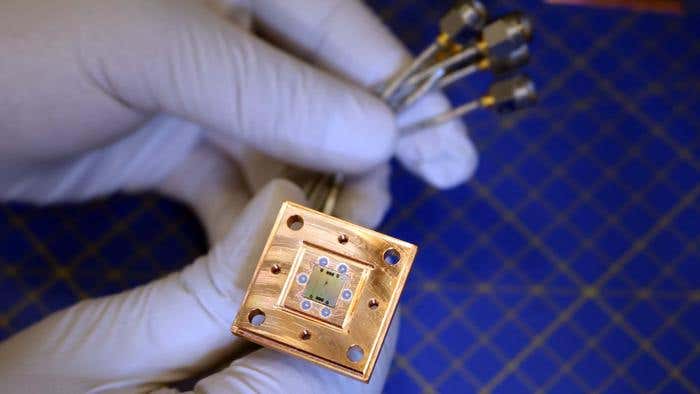‘One in a million’ molecule could be the solution for drug-resistant epilepsy
Researchers found a molecule that could be a target for treatment in patients who have become resistant to traditional anti-seizure drugs

[Mar. 17, 2023: Tara Pettinato, Tufts University]
Researchers are improving the lives of patients with epilepsy by developing a sensor system for quickly testing their saliva to see if they have the correct level of anti-epileptic medicine in their system. (CREDIT: Creative Commons)
Researchers at Tufts University School of Medicine and colleagues have identified a small molecule that may help treat people with epilepsy whose condition has become resistant to the benzodiazepine drugs usually used in managing seizures. The research, conducted in laboratory cells and rodents, was published in Cell Reports Medicine.
Uncontrolled epilepsy can lead to frequent and prolonged seizures lasting five minutes or more that can cause brain cell damage and even death. The condition affects an estimated 3.4 million people in the U.S. and millions more worldwide.
Epilepsy occurs when the intricate, delicate balance of signaling by neurons in the brain malfunctions, causing neurons to fire too much and trigger seizures. Benzodiazepines slow down the messages traveling between neurons.
“While seizures can frequently be controlled with medications, up to 30 percent of those with epilepsy develop drug resistance after a period of time,” says study co-first author Krithika Abiraman, a scientist in the Department of Neuroscience at Tufts University School of Medicine.
Related Stories
Collaborators at AstraZeneca screened more than one million compounds to identify a family of compounds that might be able to affect the activity of KCC2 in the brain.
The scientists tested one of the compounds in that family – Compound 350 – and observed that in combination with benzodiazepine, the Compound 350 reduced seizure activity in rodents with drug-resistant seizures.
“We also observed that mice treated with the benzodiazepine and Compound 350 had lower cell death in the brain than those treated only with the benzodiazepine,” said Ng, adding that this was most likely because rodents treated with both drugs were not having as many seizures.
“The small molecules we have identified have the capacity to be developed as first-in-class drugs to alleviate drug-resistant epilepsies and neurodegenerative disorders,” says Moss. “In collaboration with Ovid Therapeutics, these compounds are now under clinical development.”
Symptoms of Epilepsy
Because epilepsy is caused by abnormal activity in the brain, seizures can affect any process your brain coordinates. Seizure signs and symptoms may include:
Temporary confusion
A staring spell
Stiff muscles
Uncontrollable jerking movements of the arms and legs
Loss of consciousness or awareness
Psychological symptoms such as fear, anxiety or deja vu
Symptoms vary depending on the type of seizure. In most cases, a person with epilepsy will tend to have the same type of seizure each time, so the symptoms will be similar from episode to episode.
Doctors generally classify seizures as either focal or generalized, based on how and where the abnormal brain activity begins.
Focal seizures
When seizures appear to result from abnormal activity in just one area of your brain, they're called focal seizures. These seizures fall into two categories:
Focal seizures without loss of consciousness. Once called simple partial seizures, these seizures don't cause a loss of consciousness. They may alter emotions or change the way things look, smell, feel, taste or sound. Some people experience deja vu. This type of seizure may also result in involuntary jerking of one body part, such as an arm or leg, and spontaneous sensory symptoms such as tingling, dizziness and flashing lights.
Focal seizures with impaired awareness. Once called complex partial seizures, these seizures involve a change or loss of consciousness or awareness. This type of seizure may seem like being in a dream. During a focal seizure with impaired awareness, you may stare into space and not respond normally to your environment or perform repetitive movements, such as hand rubbing, chewing, swallowing or walking in circles.
Symptoms of focal seizures may be confused with other neurological disorders, such as migraine, narcolepsy or mental illness. A thorough examination and testing are needed to distinguish epilepsy from other disorders.
Generalized seizures
Seizures that appear to involve all areas of the brain are called generalized seizures. Six types of generalized seizures exist.
Absence seizures. Absence seizures, previously known as petit mal seizures, typically occur in children. They're characterized by staring into space with or without subtle body movements such as eye blinking or lip smacking and only last between 5-10 seconds. These seizures may occur in clusters, happening as often as 100 times per day, and cause a brief loss of awareness.
Tonic seizures. Tonic seizures cause stiff muscles and may affect consciousness. These seizures usually affect muscles in your back, arms and legs and may cause you to fall to the ground.
Atonic seizures. Atonic seizures, also known as drop seizures, cause a loss of muscle control. Since this most often affects the legs, it often causes you to suddenly collapse or fall down.
Clonic seizures. Clonic seizures are associated with repeated or rhythmic, jerking muscle movements. These seizures usually affect the neck, face and arms.
Myoclonic seizures. Myoclonic seizures usually appear as sudden brief jerks or twitches and usually affect the upper body, arms and legs.
Tonic-clonic seizures. Tonic-clonic seizures, previously known as grand mal seizures, are the most dramatic type of epileptic seizure. They can cause an abrupt loss of consciousness and body stiffening, twitching and shaking. They sometimes cause loss of bladder control or biting your tongue.
Note: Materials provided above by Tufts University. Content may be edited for style and length.
Like these kind of feel good stories? Get the Brighter Side of News' newsletter.
Joseph Shavit
Head Science News Writer | Communicating Innovation & Discovery
Based in Los Angeles, Joseph Shavit is an accomplished science journalist, head science news writer and co-founder at The Brighter Side of News, where he translates cutting-edge discoveries into compelling stories for a broad audience. With a strong background spanning science, business, product management, media leadership, and entrepreneurship, Joseph brings a unique perspective to science communication. His expertise allows him to uncover the intersection of technological advancements and market potential, shedding light on how groundbreaking research evolves into transformative products and industries.



